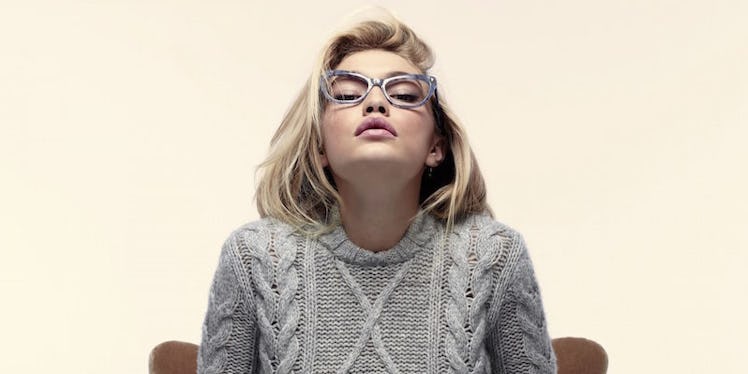
Rethink Your Frame Game: Vintage Sunglasses May Be Damaging Your Eyes
A pair of vintage cat-eyes might be your best thrift store find of the summer, but that doesn't mean they're good for your health.
Although those 50s frames go well with your wardrobe, they probably don't protect your eyes from the sun's UV radiation effectively.
Unless you're purchasing sunglasses labeled specifically for protection against UVA and UVB (two of three types of radiation from the sun), your no-shield sunglasses increase your risk of developing ocular problems like macular degeneration and eye cancer.
There's even a condition called photokeratitis – more commonly known as sunburn of the eye. Yikes.
In fact, recently published research from the Vision Council indicates Millennials are the least likely of any generational group to pop on shades before going outside.
Just 43 percent of those interviewed were likely to remember to wear sunglasses regularly.
With the dog days of summer underway, it's important to rethink your frame game. Unless you're prepared for under eye dark spots and prematurely aging eyes, step up your sunglasses routine.
Consider eye color first.
Here's an eye-opener: The shade of your iris actually effects the way UV rays hit your eye. According to the Council and published studies, those with light colored eyes (think: pale blue) are more susceptible to UV damage than their brown-eyed friends.
One theory is that less melanin means a thinner shield of protection against harmful rays. To protect your baby blues, make sure to pack sunglasses for every outing.
Note that, unlike eyes, the color of sunglasses' lenses doesn't actually effect the quality of their protection.
Check your watch before heading outdoors.
Not all times of day are equally dangerous for skin and eyes, which means it's important to stay informed about which hours are the most crucial for sun protection.
From 8 am to 10 am, as well as 2 pm to 4 pm, the Vision Council reports UV rays are double the intensity of the afternoon.
A morning run on a warm Saturday may seem like a good idea, but it's important to wear eye protection.
Note that the danger doesn't just lie in rays coming directly from the sun, but UV bouncing back up into the eyes from surfaces. Water reflects 100 percent of UV while surfaces like concrete push back up to 25 percent of the harmful rays.
No sticker, no dice.
The only easy way to be completely sure your eyes are protected is by looking for a sticker or tag that indicates it's designed to guard against UV.
Surprisingly, high-quality lenses don't have to come with a high price tag, either. Even Nasty Gal's $40 iridescent tortoiseshell frames come with a promise of UVA 400 protection, which blocks between 99 and 100 percent of UVA and UVB Rays.
Size matters.
Think like Anna Wintour, and pick the largest sunglasses you can find. You might not immediately merit front-row invitations to fashion week, but your skin will be grateful.
The reasoning is this: The skin around your eyes is paper-thin, which is why beauty features nearly always recommend applying lotion with your ring finger instead of your whole hand.
Although small lenses might fit your face best, a larger shape means more coverage. What's more, sunglasses with wide arms block sun coming in at an angle. Invest in a quality, wraparound pair and your eyes will thank you.